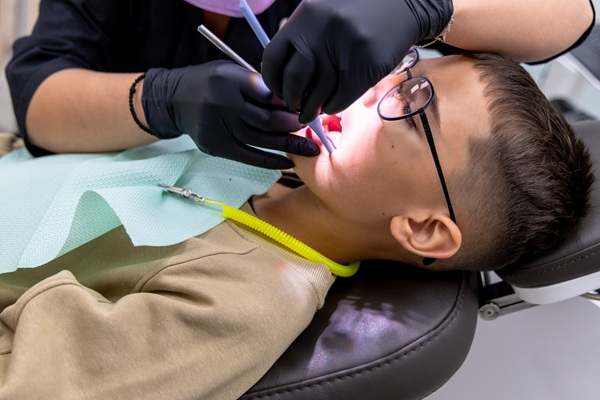Do I Need a Referral To See an Orthodontist?

Wondering whether you need a referral in order to see an orthodontist? Read on to find out. Most people understand the cosmetic and oral health benefits that visiting an orthodontist offers. However, many patients wonder if they make a good candidate for this type of treatment. An orthodontist can help restore your smile and general oral health.
How visiting an orthodontist works
It is helpful to fully understand how visiting an orthodontist works to calm any anxieties that might exist before the first visit. A patient should know what an orthodontist is and when it is necessary to consider a visit. Patients should also know whether or not a referral is necessary before scheduling their appointment.
What is an orthodontist?
Orthodontics is a form of dentistry that is primarily concerned with correcting misaligned teeth. Orthodontists can improve the cosmetic appearance and oral health of the patients. An orthodontist undergoes extensive dental education and receives their license after going through an orthodontic program. Orthodontists treat a wide range of dental health issues. These include crooked teeth, crowded teeth, gaps between teeth, underbites, overbites, and crossbites.
Is a referral necessary?
Patients do not need a referral from a dentist to visit an orthodontist. Individuals who want to straighten their teeth and jaw can visit an orthodontist — whether that is for cosmetic or oral health reasons. Sometimes, dental treatment is required before orthodontic care can be administered. In that case, the orthodontist can refer the patient to a dentist.
When to consider a visit
Anyone who is not happy with the appearance of their smile should consider getting orthodontic treatment. Patients typically seek orthodontic treatment due to crooked teeth, crowded teeth, or any other type of malocclusion. Everyone deserves a smile they love to show off each day. Patients should not have to feel insecure about the alignment of teeth or jaw. An orthodontist can help restore any oral misalignment.
Benefits of orthodontic care
Visiting an orthodontist is a great way to improve the appearance of a patient’s smile. Most people are familiar with the cosmetic benefits of orthodontic care. However, many are surprised to learn about the oral health benefits. Straighter teeth are often much easier to care for and keep clean. Straighter teeth and a better bite position can help patients prevent oral health complications such as tooth decay and grinding teeth.
An overview of the orthodontic treatment process
The process for every patient may look different depending on their unique goals for orthodontic treatment. However, the following is a general overview of what you can expect when visiting an orthodontist.
Discuss your treatment goals
Patients can start the process by scheduling a consultation; as discussed, patients do not need a referral for a consultation visit. During the first visit, the patient and the orthodontist discuss treatment goals and determine the best way to meet those goals through orthodontic treatment.
Oral examination and dental x-rays
An oral examination is usually performed on the first visit with an orthodontist. This involves a detailed and professional look inside the mouth to examine the alignment of the patient’s teeth and detect oral health concerns that need to be addressed before orthodontic treatment. Dental x-rays and a dental impression are usually ordered on the first visit as well.
Establish the treatment plan
The treatment plan is usually established during the consultation visit as well. This includes deciding between braces and clear aligners, determining a time for follow-up visits, and more.
Start the treatment process
The orthodontic treatment process involves regular visits to the orthodontist to track the progress of treatment and continue tightening braces or providing new aligners as teeth shift into their optimal position.
Retainer wear and aftercare
Lastly, all patients who undergo treatment with braces and clear aligners are required to wear a retainer at the end of the treatment process to help ensure teeth do not shift back to their original position, which they have a tendency to do without a retainer. Eventually, the jaw hardens around the new teeth alignment and the retainer is not needed as regularly.
Ready to get started?
Undergoing treatment from an orthodontist can help patients gain a smile to truly be proud of. The dental professional will guide you through the entire orthodontic treatment process. Your orthodontist will help you from the initial consultation to the follow-up care after the treatment. If you would like to schedule an orthodontic consultation, contact us today.
Request an appointment here: https://nettsmiles.com or call Nett Pediatric Dentistry & Orthodontics at (623) 759-7658 for an appointment in our Phoenix office.
Check out what others are saying about our dental services on Yelp: Orthodontist in Phoenix, AZ.
Recent Posts
Regular visits to a pediatric dentist who specializes in young patients are an important part of establishing good oral health practices. Many instances of severe dental conditions in children stem from either a lack of regard for proper hygiene or a lack of knowledge on the proper ways to care for a child's teeth. Check…
A baby root canal may sound scary, however, it is nothing to be afraid of. Modern-day dentistry has allowed for the evolution of gentler techniques and safer approaches, thus reducing the risk of complications and pain during the procedure.Baby root canals, in particular, are done differently as they are performed in a pediatric dentistry setting,…
Although receiving orthodontic treatment is not exactly exciting, you can make braces for kids fun. Braces are significantly less noticeable than they were in the past, and some are nearly undetectable. The latest braces are also more comfortable and dependable, allowing kids to focus on the things that matter. Today’s braces provide a wider range…
Composite fillings are a popular choice for filling cavities in both children and adults due to their natural appearance and versatile benefits. Unlike traditional silver or gold fillings, composite fillings are tooth-colored and blend seamlessly with the natural tooth structure. This makes them a highly desirable option for those who prioritize aesthetics in their dental…


